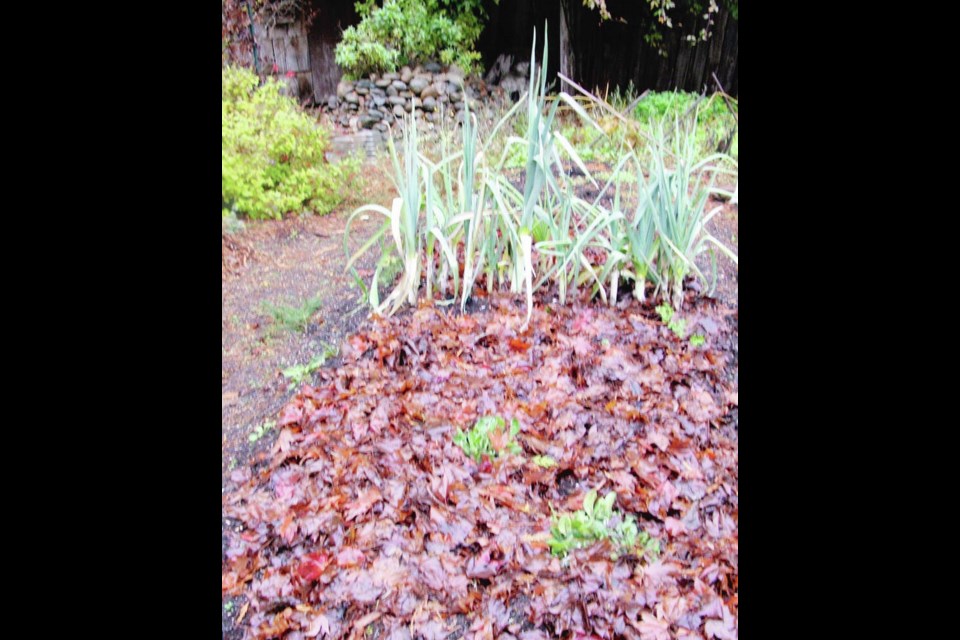Dear Helen: I’ve noticed, with increasing frequency, the admonition to protect the soil in our garden plots, especially over the winter, by keeping it covered. Leaves are usually recommended. My question: Do all leaves decompose completely over the course of the winter season?
A.S.
Not in my experience. Even the small, cut-leaf Japanese maple leaves I sometimes gather from a garden across the street don’t completely disintegrate into the soil by planting time in the spring.
When the time comes to uncover and prepare the soil for planting, I use a light metal leaf rake to lift up and set aside leaves that remain whole. Those leaves are either composted, or kept to use later as a soil-cooling, heat-deflecting soil cover around long-term vegetables such as tomatoes and squash.
The leaves that are well fragmented can be scratched into the soil surface, along with compost, lime (except for potatoes) and fertilizer prior to planting.
Dear Helen: Late last fall was the first time for me to unpot my begonia tubers and store them in a frost-free place for the winter. Now I’m wondering when and how they should be started back into growth again.
L.B.
I usually aim for the first week in March, because that’s almost always when the first tiny nubs of pink growth begin to appear at the tubers’ upper surfaces. I’d check your tubers now, and consider bringing them into the house to begin re-growing.
I store my begonia tubers lightly covered in coarse vermiculite or a very light-textured potting mix. When I bring them out of storage, I usually uncover the tubers but keep them nestled into the vermiculite and spray-misted until I see pink nubs of potential growth clearly developing at the tops of all the tubers’ surfaces. Moderate warmth is helpful at this stage, to initiate root growth.
Once a satisfactory batch of initial nubs of growth has appeared, I pot the tubers, covering the tops only barely, and place the pots in bright indirect light (or under plant lights) in cool room temperatures for stocky growth.
Dear Helen: Why do my amaryllis bulbs, in their post-bloom phase, always produce big leaves that flop over?
M.D.
You are wise to be concerned. A decent amount of strong foliage on post-bloom amaryllis bulbs works to help nourish and mature the bulb for another round of flowers.
Large, flopping leaves can be the result of a number of factors: not enough light, too much water, temperatures that are too warm. Fertilizing with a high-nitrogen plant food can sometimes result in the same problem.
The amaryllis bulbs I have grown have produced their best post-bloom winter foliage at the family room glass doors, which face south. Next to the glass, temperatures stay cool. I’m fairly miserly with the water, and I fertilize every two weeks with a seaweed fertilizer solution diluted to half the label’s suggested strength.
Seaweed fertilizer is rich in trace minerals and most seaweed products are well balanced among the major nutrients. They help to keep amaryllis foliage sturdy, dark green, and attractive.
Dear Helen: The leek seedlings in the photo with this email were sown on Feb. 15. They are under a grow light. I don’t know what to do with them now. The tall ones are flopping over. Should I begin hardening them off by gradually exposing them to outdoor temperatures, or can I plant them in my allotment garden plot?
E.W.
The slight floppiness I see in your photo could be caused by a soil or seeding mix that was not pressed down firmly enough prior to seeding, or to heat, overwatering, or too much nitrogen in the mix. Inadequate light is another common cause of floppy seedlings, but this should not be an issue with your seedlings under grow lights.
In my experience some leek varieties are naturally sturdier than others as seedlings. Over recent years, a Scottish heirloom leek (1834) has been my most successful leek variety.
The first thing I would do with your seedlings is to snip away the floppy tips. Most are carrying the germinated seed cases, which can weigh the seedlings down. Then, either thin or transplant them to give each one adequate room to develop. Plant in your allotment plot at some point this month or in early April, when weather and soil conditions are reasonable.



